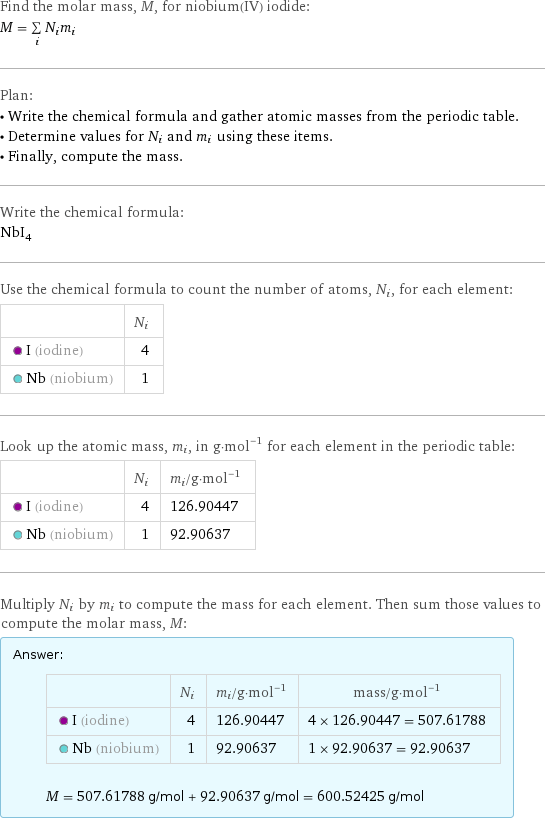Input interpretation

niobium(IV) iodide | molar mass
Result

Find the molar mass, M, for niobium(IV) iodide: M = sum _iN_im_i Plan: • Write the chemical formula and gather atomic masses from the periodic table. • Determine values for N_i and m_i using these items. • Finally, compute the mass. Write the chemical formula: NbI_4 Use the chemical formula to count the number of atoms, N_i, for each element: | N_i I (iodine) | 4 Nb (niobium) | 1 Look up the atomic mass, m_i, in g·mol^(-1) for each element in the periodic table: | N_i | m_i/g·mol^(-1) I (iodine) | 4 | 126.90447 Nb (niobium) | 1 | 92.90637 Multiply N_i by m_i to compute the mass for each element. Then sum those values to compute the molar mass, M: Answer: | | | N_i | m_i/g·mol^(-1) | mass/g·mol^(-1) I (iodine) | 4 | 126.90447 | 4 × 126.90447 = 507.61788 Nb (niobium) | 1 | 92.90637 | 1 × 92.90637 = 92.90637 M = 507.61788 g/mol + 92.90637 g/mol = 600.52425 g/mol
Unit conversion

0.6005242 kg/mol (kilograms per mole)
Comparisons

≈ 0.83 × molar mass of fullerene ( ≈ 721 g/mol )

≈ 3.1 × molar mass of caffeine ( ≈ 194 g/mol )

≈ 10 × molar mass of sodium chloride ( ≈ 58 g/mol )
Corresponding quantities

Mass of a molecule m from m = M/N_A: | 1×10^-21 grams | 1×10^-24 kg (kilograms) | 601 u (unified atomic mass units) | 601 Da (daltons)

Relative molecular mass M_r from M_r = M_u/M: | 601